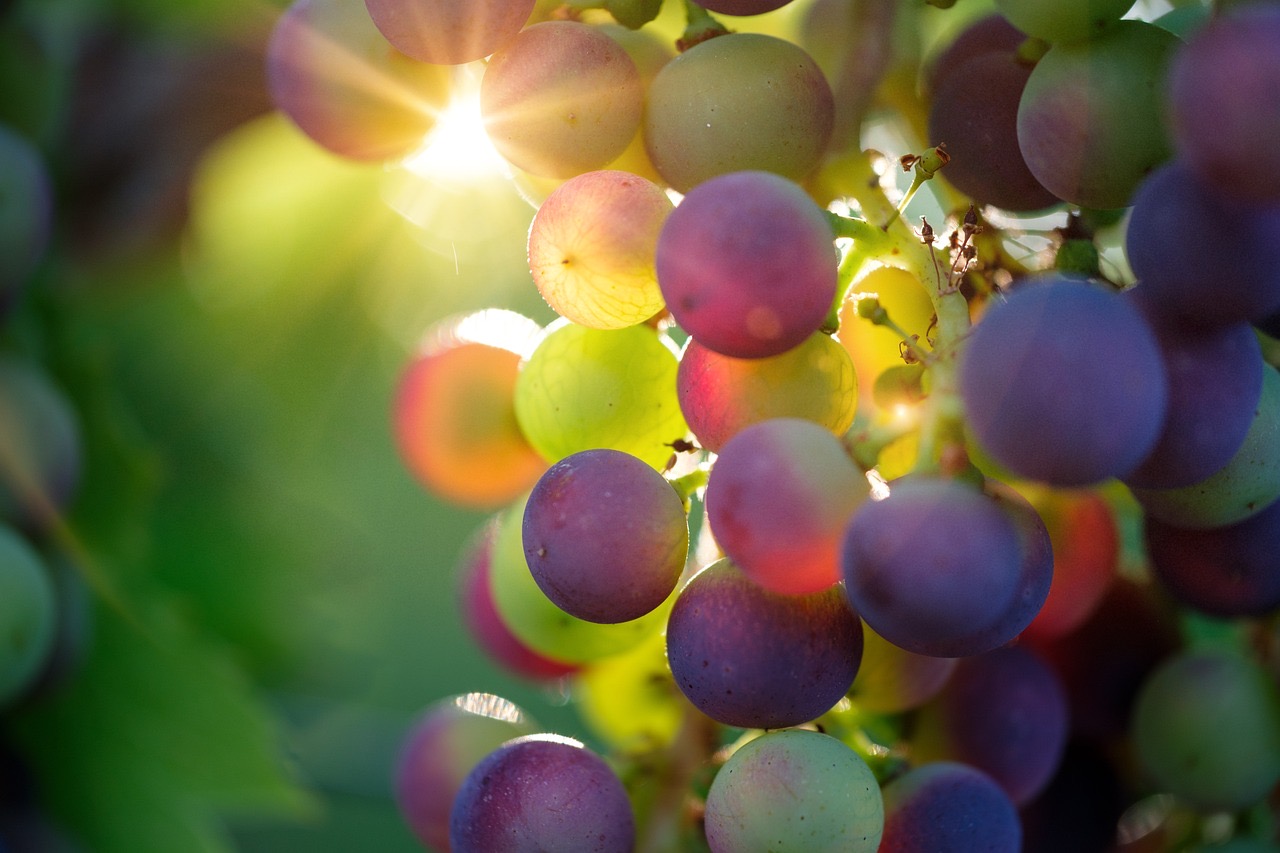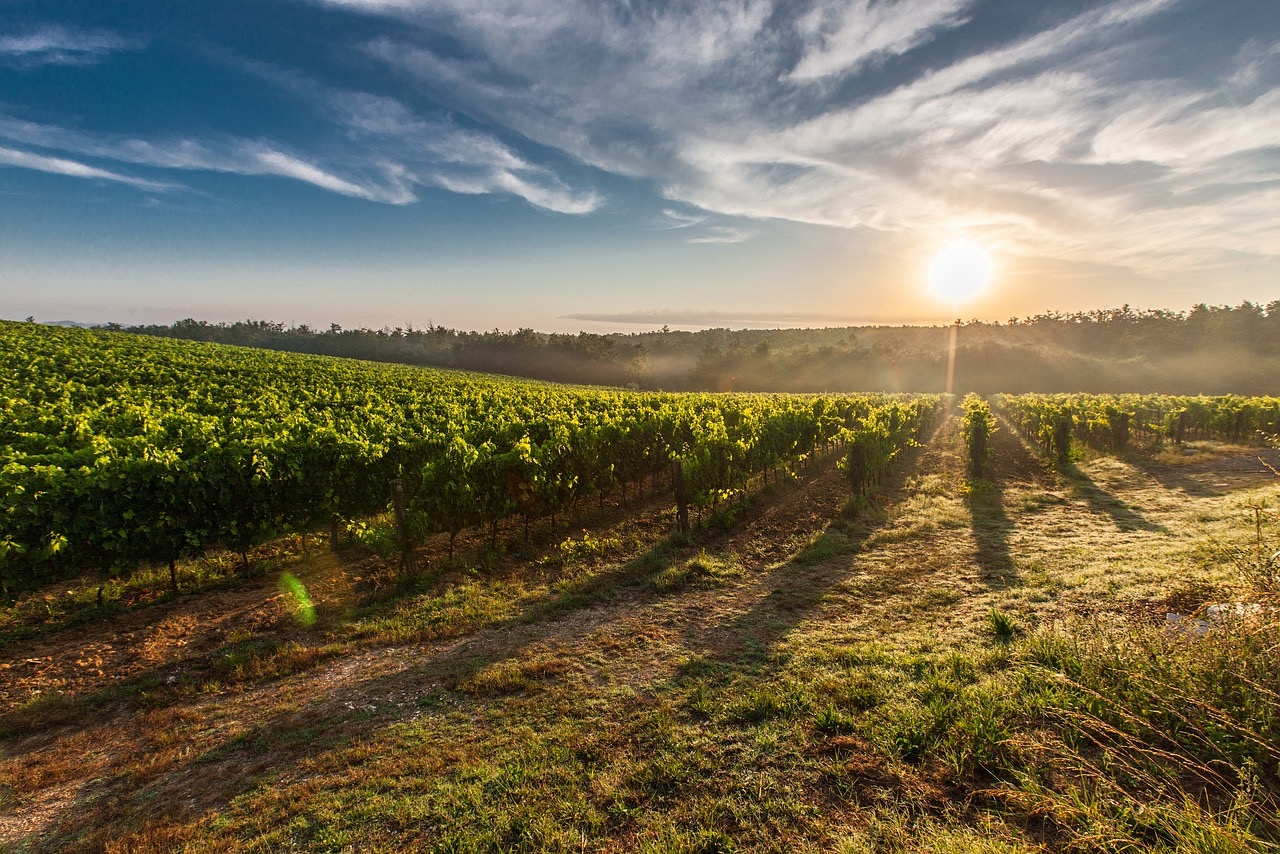From the shores of Italy’s breathtaking Lake Garda comes Bardolino – one of the most recognizable wines of the area, named for the beloved village of the same name that is a favorite tourist destination, tucked away between rocky mountain perches, soft hills, and rolling plains.
The extensive lake region takes in splendid natural panoramas, from pre-alpine vistas to the vivacious colors and scents of the Med. Here the spectacular mix of transparent waters, quaint villages, historic castles, sandy beaches, and craggy peaks, join the reflection of vineyards mirrored on Garda’s aquamarine surface.
The wines of Bardolino are the fortunate benefactors of an ideal interplay of rains, temperatures, a mild climate, and exposition to the sun. A variety of soils worked by generations of wine producers dedicated and passionate about sharing one of the lake’s oldest traditions create the perfect location for the making of a wine that is highly appreciated and unique.
The Historic Wines from Garda
The story of local wine production in the area is long, starting with piles of grape seeds known as pips found in Bronze Age dwellings. Other objects such as amphorae used to store wine from the Roman era also attest to winemaking’s age-old story here. In the Middle Ages, religious institutions encouraged agriculture – specifically that of vines and olive trees – by offering rent in kind to those who cultivated the lands belonging to monasteries.
Yet it wasn’t until the 19th century that the name of Bardolino began to be associated with these wines, and it wasn’t until the first decades of the 1900s that they began to demand a following, winning several prizes such as that of the Trade Fair of Veronese in the 1920s. Within a decade, bottles of Bardolino began leaving the shores of Italy for exportation to the United States.
Declared a DOC in 1968, a consortium for the protection of the wine was founded one year later, and was followed by a viticultural reorganization and replanting of the vineyards from 2002-2005. Over the past decade, the wines of Bardolino have received numerous awards including those of Gambero Rosso, Decanter World Wine Awards, James Suckling, Annuario dei Migliori Vini Italiani, the WH Award, and the Paris Wine Cup.
Bardolino Blend Grape Varieties
The main grape variety used in the production of Bardolino is Corvina Veronese, an indigenous vine from the area that is pressed immediately after harvest. The grapes are known for their particular ability to adapt to the various soils of the lands – typically clay, sand, and pebbles – interpreting the terroir with notes that are fruity and spicy with a distinct sensation of fresh tanginess.
The blend is regulated, stipulating that Corvina Veronese can account for up to 95% with the remaining 5% coming from other local grapes such as Rondinella, Veronese Cultivar, Corvinone, and Molinara.
A Terroir in Zones
The vineyards of Bardolino are located on the eastern side of Lake Garda in a morainic amphitheater created by glaciers. The soils are known for their wide variations that include 66 different types – a result of the deposits brought by the glaciers as well as those that have descended from the valley of the Adige River.
Three distinct subzones of production mark the region of Bardolino. The most northern and inland area is that of Montebaldo where higher altitudes meet a fluvio-glacial plain in a location that benefits from more noticeable thermal excursions and high levels of rain. These wines typically show nuances of strawberry and clove.
Another subzone is that of La Rocca. Bordered on the north by the hills of La Rocca and Mount Luppia, these vineyards grow on the finer soils of the morainic hills close to the lake with newer growing areas spreading further inland, offering wines that have notes of raspberry and cinnamon.
The third subzone is known as Sommacampagna – the area that experiences the highest average temperatures and the most rainfall. Vineyard plots pop up in hilly areas and tiny valleys, dotted with terraces, basins, and moraines. These wines display flavors of cherry and black pepper.
In the Vineyard and Winery
Bardolino production is highly regulated. In the vineyard, yields are strictly controlled with a maximum of 12,000 kilos per hectare for the Bardolino DOC and 10,000 kilos per hectare for those from the subzones of Montebaldo, La Rocca, and Sommacampagna.
In the cellar, methods must create ruby red wines with a dry, tangy, and well-balanced flavor. Those from the three subzones must also be clear and bright with flavors that are dry, tangy, and harmonious with a bouquet that renders fresh berry fruit and spices, with a hint of floral or herbs. These wines cannot be enriched with must and can only be released starting from 1st September of the year following their harvest, although, in reality, many producers leave their wines to mature much longer than that.
Styles of Bardolino
The wines of Bardolino are made in two styles – classic red and rosé.
The reds, Bardolino DOC and Bardolino Classico DOC, exhibit distinct notes of strawberry, raspberry, cherry, and currant. Those hailing from the subregions tend to have an extra layer of spices and black pepper. For a red with a higher ABV and bolder characteristics, there is the Bardolino Superiore DOCG.
The region’s rosé wines are known as Chiaretto DOC, offering a dry, fresh, harmonious profile, highlighted by notes of ripe berries with a light hint of spice. Bardolino Chiaretto Classico must be grown in the town and encompassing villages of Bardolino itself and is considered to be the best of the Chiaretto DOC. These rosés are generally still though a lightly bubbly Chiaretto Spumante is also available.
Pairings for Bardolino
Bardolino reds make for fairly versatile wines when it comes to food pairings. Locally they are served with typical dishes such as lake fish and risottos. They also work splendidly with ravioli, main dishes, and legume soups. They are best served between a temperature of 14-16°C.
The Chiaretto rosés, on the other hand, are an ideal aperitif and go well with lighter foods such as antipasti, fish and poultry dishes, cured meats, semi-mature cheeses, pizza, and sushi. Ideally, these wines are served at a temperature between 10-12°C.
Visiting the Wine Region and Lake Garda
With a surface area of 2,700 hectares and 200 winemakers, Bardolino is the perfect area for wine tours that also offer stunning panoramas of Lake Garda and time to experience picture-perfect tiny villages. Tours often extend to local olive oil mills and even to craft distilleries known for their production of grappa. Leisurely drives curve past natural parks, archaeological museums, Roman ruins, Medieval castles, ancient churches, and noble family villas surrounded by lush gardens. The lake is also a wonderful spot for experiencing spas, fine dining and hotels, sailing, and windsurfing, and is close to the romantic beauty of Verona.
Liana Bicchieri















